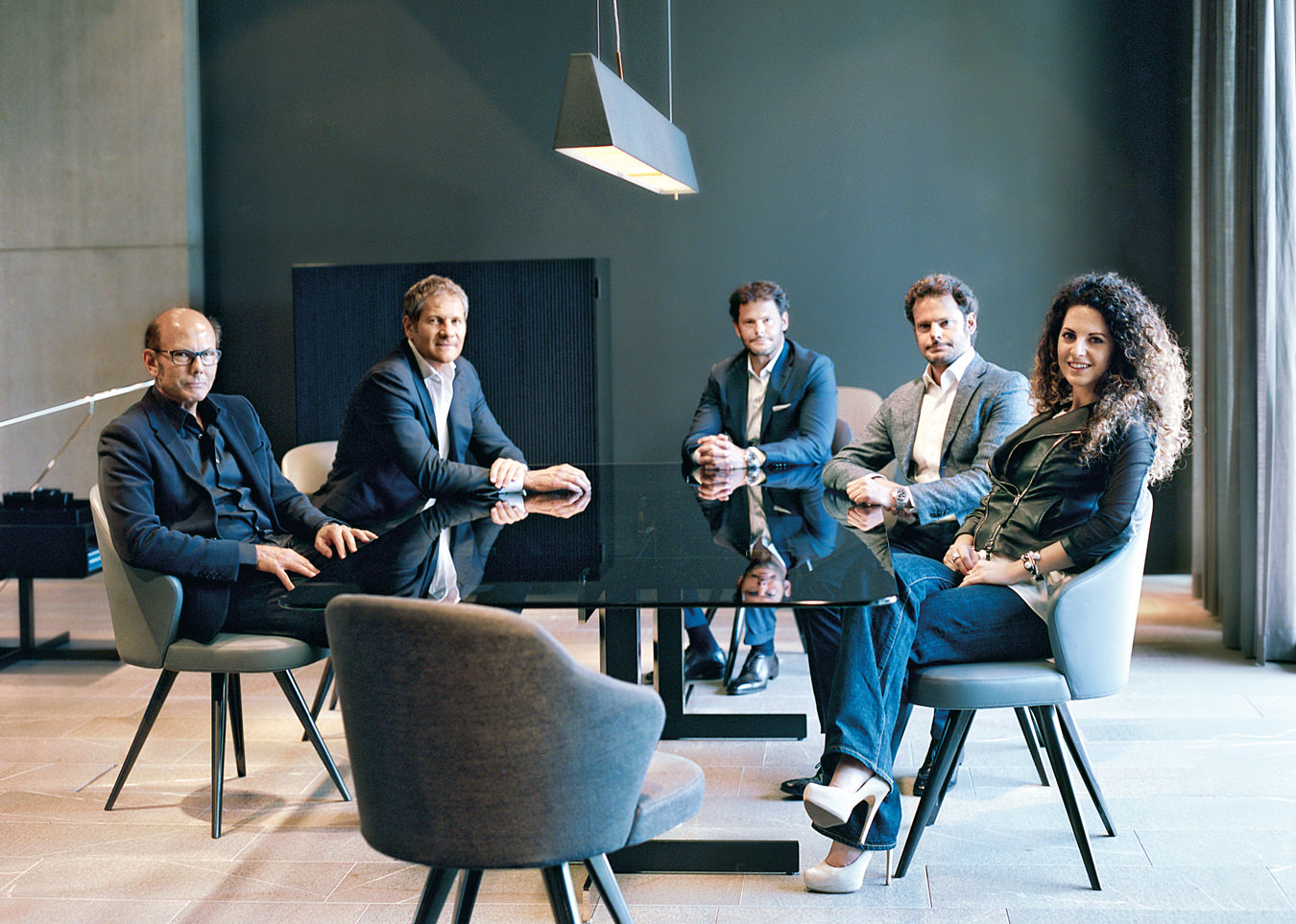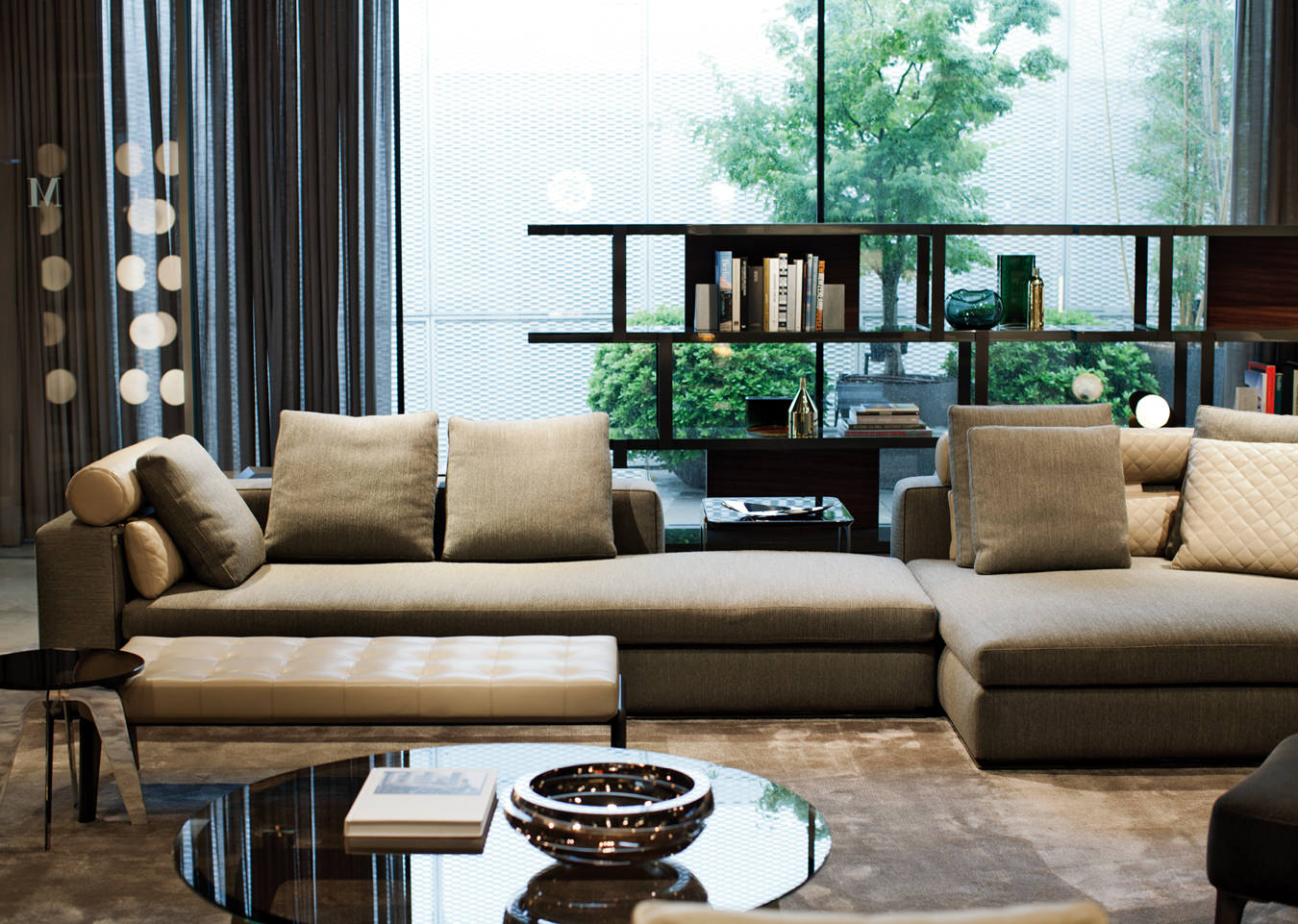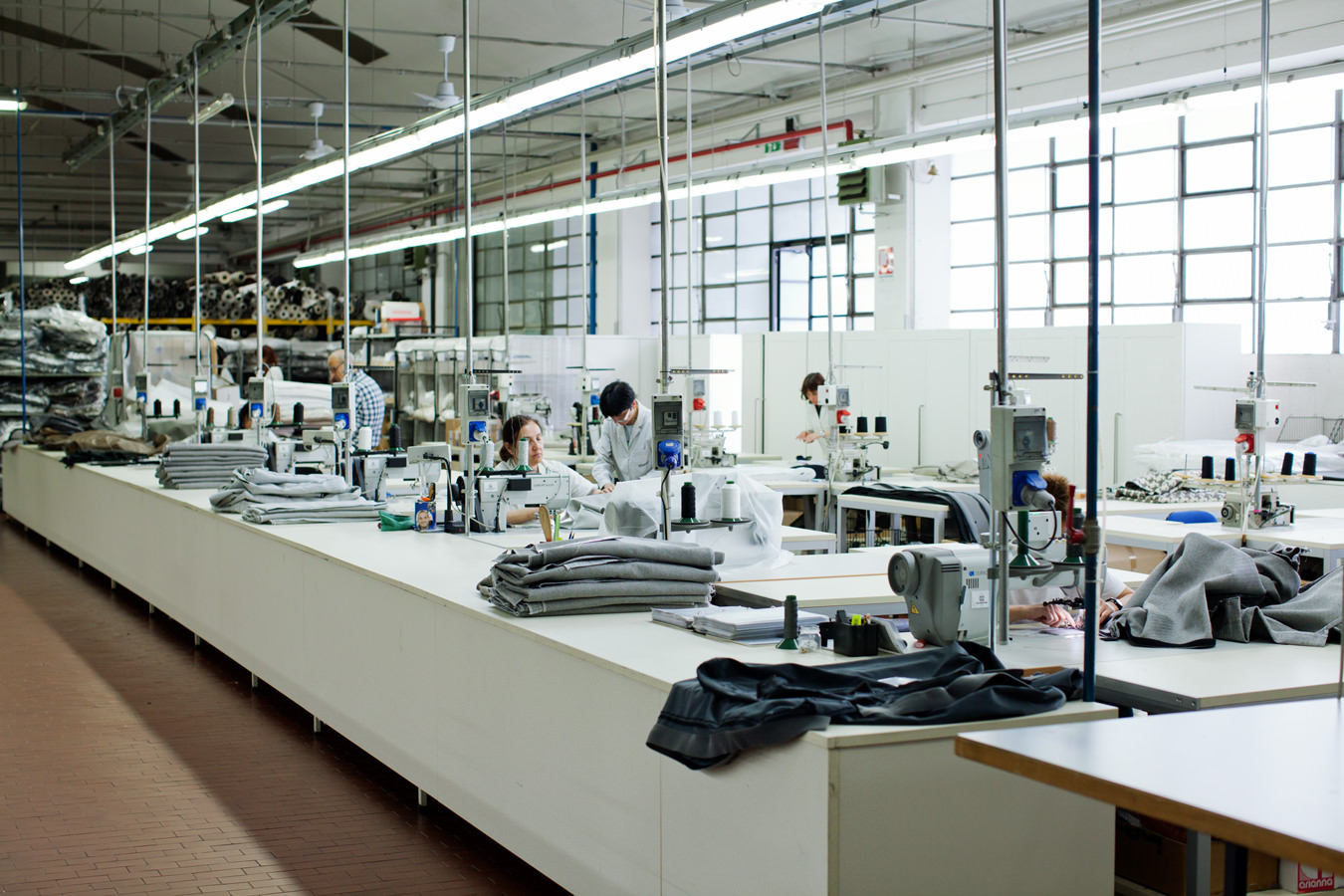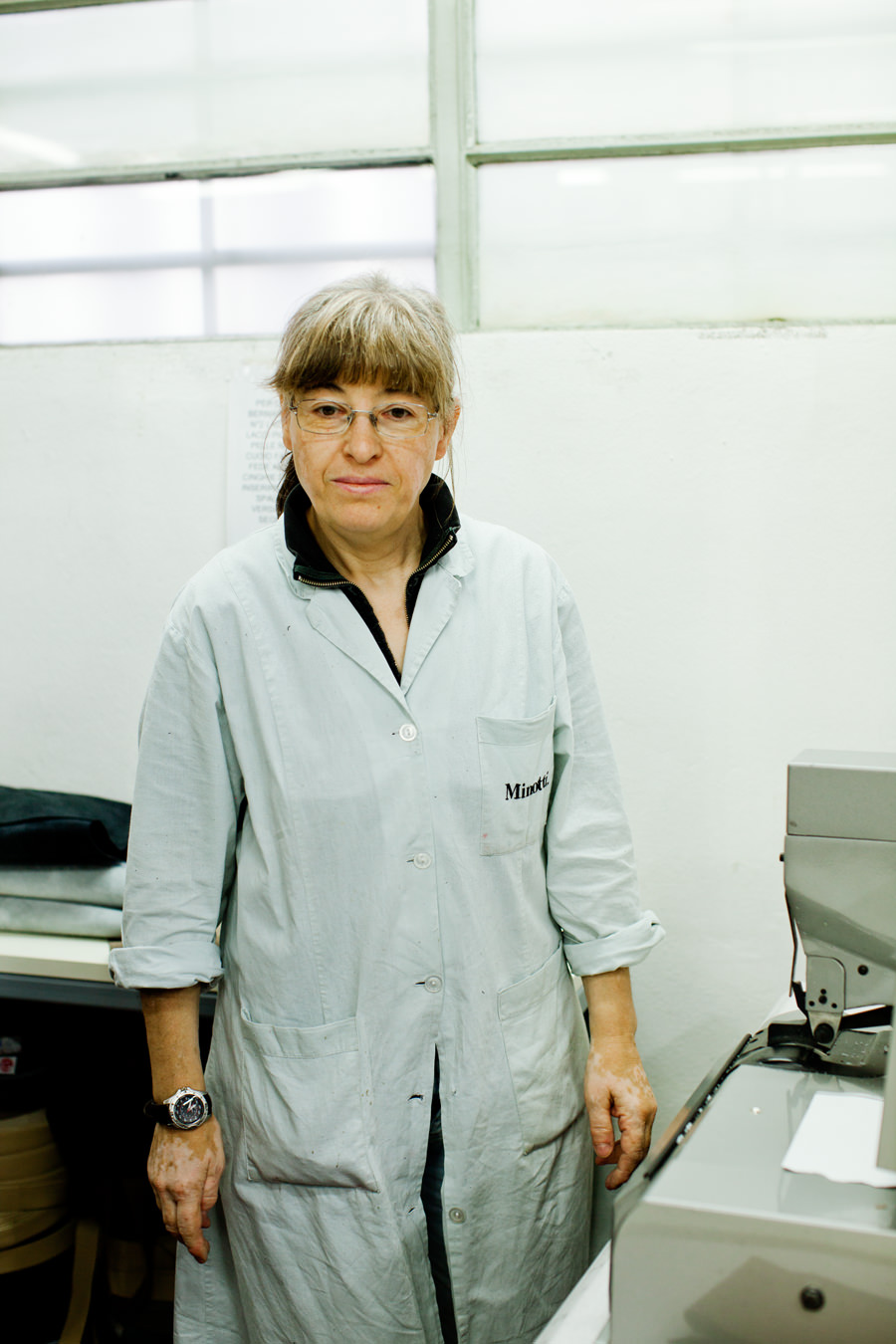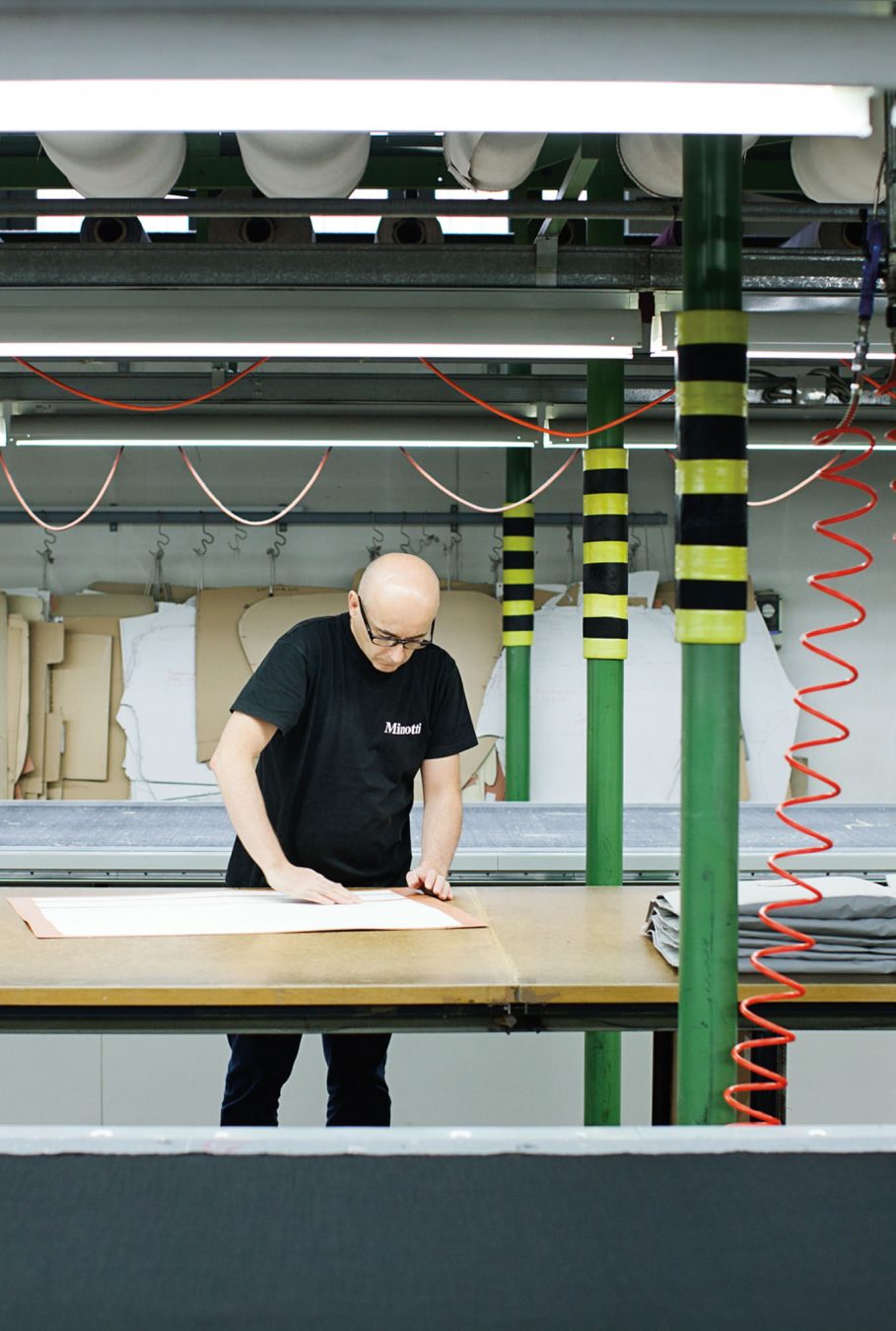The town of Meda, population hovering around 24,000, sits halfway between Milan and idyllic Como. It has a remarkable history, as do many such towns in the northern reaches of Italy, where Napoleon and the Habsburgs at varying times claimed proprietorship. But since the 17th century, Meda has steadily built a reputation as the epicentre of Italian furniture design and manufacture. The Cassina facilities are here, for example. One family-owned business is flourishing on an international scale while remaining steadfastly true to its artisanal roots: Minotti.
Alberto Minotti began his business in the mid-1950s, producing hand-made furniture at a strictly boutique level. But he had ambitions, and less than a decade later, he was already producing on an industrial scale. His two sons, Renato and Roberto, both joined the company, Roberto a few years later than his older brother, and together they have grown the brand into an international design and production venture, all the while maintaining their handmade methods, at the original site in Meda.
That site now can encompass production and shipping to all parts of the globe, fulfilling market demands and keeping their “Made in Italy” philosophy intact. Architect Rodolfo Dordoni joined the brothers in 1997, to co-ordinate the collections as they are developed. Roberto Minotti explains that they “never really stop. The design process is ongoing, always. I am always imagining what we can do for the next step.” Minotti has developed new, technology-driven ways to enhance production, but has been able to sustain its levels of craftsmanship. In the factory, all in neat rows sit seamstresses at sewing tables, putting together pillow covers, cushion covers. Large pieces of leather are analyzed by computer, and cutting patterns are established, all under the watchful eyes of master craftsmen, who mark the crucial cutting patterns by hand, with pieces of chalk. The cutting itself is done by highly evolved equipment that ensures precision, again under close scrutiny.
Renato Minotti quietly notes that “launching each new collection can be compared to re-inventing a company. Time is short, not just for creative thinking, but in getting new technologies into place.” Roberto agrees, and adds, “Be new, create surprises that keep the Minotti tradition intact. Surprise, but not shock; evolution, but not revolution.” The brothers both see bringing in Dordoni to their design “think tank” as a crucial step. Roberto says Dordoni is “a man of few words, but very straight and clear.” Dordoni maintains an overall view of the company’s progression, while the two brothers attend to sales, marketing, and finances, with all three comprising the core design impetus. Roberto smiles in telling an enlightening story about how this really works, daily, on the ground: “We try to speak one design language. Geometry, architecture. We never launch a product only, but also a context for that product. When my brother and I travel, we come home and talk about what we see. We travel with open eyes, open minds. Last year, we both came home, sat in this meeting room, and we had each brought exactly the same architectural magazine, and exactly the same article in that magazine. So we seem to be truly on the same page.” Renato nods in agreement, and adds, “We understand the needs and tastes of various markets around the world, but always speak in one design language.” New materials and new technologies are part of the program, certainly, but considerable effort and research goes into investigating older materials, different types of leathers, treatments for leathers, different kinds of wood, treatments of chenille, velvet, cashmere. Each year, a new fabric and leather collection is introduced. The textiles division of Minotti means individual customers can in effect create their own furniture, a bespoke option that is empowered by the materials collection and the factory’s prowess in realizing a unique design.
Alberto Minotti brought his two sons into the company on a voluntary basis. There was never any pressure to join, but first Renato and then Roberto were on board early in their professional lives. By 1985, they were taking the company in a new direction, more intensely design-forward, and international in scope, but all with Alberto’s approval. “Our father gave us his blessing, and all he really insisted on was that we maintain the spirit of challenge that he had always brought,” says Roberto. “Unfortunately, he passed away in 1991, so he did not see his faith in us truly pay off. But he is always here, in some sense.”
A third generation is now in place as well, learning the business from the roots up. Alessio and Alessandro Minotti, Renato Minotti’s twin sons, and Susanna Minotti, Roberto Minotti’s daughter, are all active in the company (Roberto also has three more children, younger than Susanna, all in school. When they are older they will decide whether or not they want to join the business). Alessio expertly leads a comprehensive tour of the factory, explaining the latest technologies, the season’s new batches of leathers, colour schemes, and even how a new, curved sofa is made, with all the necessary modifications to machines that create the frames. He demonstrates how the sorfilo technique, in which two individual pieces of textile are joined without an obvious seam, yields a breathtaking final result for a sofa or chair. Jacquard patterns abound, and customers can essentially prescribe their own unique furniture, from shape and size through colour, texture, cloth, and leather. Alessio explains that “every once in a while we discourage a customer from indulging in a colour that we think does not work, but that happens rarely, and often they proceed with the piece anyway.” He smiles briefly, and adds, “The whole point is that any customer anywhere in the world can create their own interior design, and we will execute it exactly to their tastes.” This even applies to their new line of outdoor furniture, which features hand-woven cord patterns throughout, a striking collection that is also extremely comfortable. The new outdoor line reflects the Minotti philosophy very well. Roberto says, “We remain curious all the time. The Seymour sofa, with all its curves, the outdoor pieces. Who would have thought we could do such things? But it makes total sense, now that you see the finished pieces.” He pauses, adds, “Feedback is important for us, we see our successes, but then it is, ‘What do we do next?’ It is not only to satisfy a taste for the new, but it is about an attitude, a feeling. This is what Minotti does.”
Looking at the magnificent pieces on display in their Meda showroom, it is extremely easy to understand what Roberto means. His passion is played out in every piece, right down to the table lamps, side tables, bureaus, ingenious and beautiful entertainment cabinets, bedroom suites. The brothers remain restless, open to new possibilities, and the showroom reveals only a small fraction of their vision made tangible. It is an impressive sight, and an inspiring one, too. It all creates reluctance to head back out into the damp evening, a wonderful hotel and dinner still ahead, with memories still fresh of the morning arrival to the train station in Milan, where the tin roof became a jet-engine-loud timpani of pounding rain.

